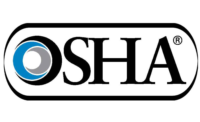 With two million Latinos – mostly foreign-born – employed in the U.S. construction industry, the Center for Construction Research and Training (CPWR) has translated its image-driven Hazard Alerts (on topics like silica, trenches, and aerial lifts) into Spanish. The eye-catching Alerts are available for free download.
With two million Latinos – mostly foreign-born – employed in the U.S. construction industry, the Center for Construction Research and Training (CPWR) has translated its image-driven Hazard Alerts (on topics like silica, trenches, and aerial lifts) into Spanish. The eye-catching Alerts are available for free download.
The CPWR’s "Lessons to Go Home Safe," has been also made available for a Spanish-language audience. The three short animated videos -- telling true stories of a fatal trench collapse, ladder fall, and electrocution, along with methods to prevent similar accidents -- have been viewed more than 18,000 times since their English-language debut on New Year's Day 2014. Now Spanish as well as English versions are available on CPWR's Youtube Channel.
Additionally, CPWR consortium member Michele Oschner and colleagues in New Labor have developed and tested a Spanish-language Day Laborers' Health and Safety Workbook and an accompanying Trainer's Companion Guide. The worker-centered curriculum is available in English as well.
CPWR Executive Director Pete Stafford noted that Latino workers “suffer death death and injury on the job at rates well above the industry average, and many would benefit from quality Spanish-language safety and health materials.”
The Center’s Training Department has also created a Spanish-language Hazard Communication Training Manual to help Spanish-speaking workers become familiar with the new symbols and requirements of OSHA’s updated HazCom Standard.
The National Institute for Occupational Safety and Health (NIOSH) has now made its Buy Quiet web resource available en español. The Buy Quiet initiative is intended to help fight noise-induced hearing loss in the construction industry. Visit the Spanish-language site at Compre las máquinas silenciosas.


